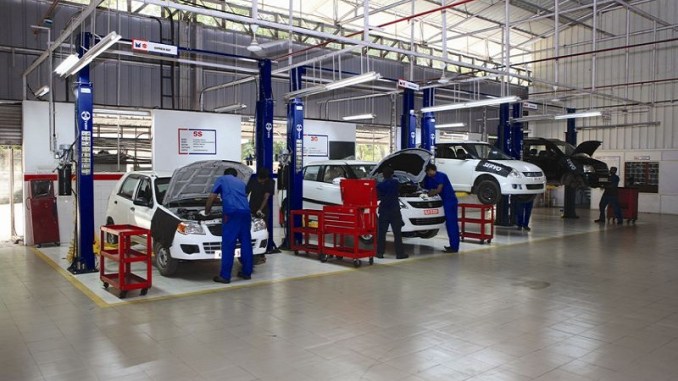All Categories
Featured

Two crucial solutions that are often forgotten yet have a substantial effect on tire longevity and performance are tire turning and alignment. Allow's dive right into what tire rotation and placement are and why they're vital for your car.
What Is Tire Turning? Tire turning is the process of moving your tires from one setting to one more to guarantee they wear equally. Since your car's tires operate at various rates depending upon their setting (front tires versus rear tires), turning them routinely aids to distribute the wear equally, resulting in a longer life-span for your tires.
Tires on the front axle have a tendency to wear quicker than those on the rear axle, especially in front-wheel-drive cars and trucks, where the front tires deal with both guiding and power. On the other hand, back tires may use unevenly depending on the lorry's weight circulation and driving problems. By revolving your tires every 6,000 to 8,000 miles (or as advised by the maker), you'll guarantee an extra well balanced wear pattern.
What Is Tire Alignment? Tire positioning, likewise referred to as wheel alignment, refers to adjusting the angles of your automobile's wheels to the supplier's specifications. Correct positioning guarantees that your tires are pointing in the appropriate instructions, and it assists maximize tire life and enhance lorry handling. There are 3 primary aspects of alignment: camber, wheel, and toe.
Camber refers to the tilt of the tires from the front of the automobile. If your tires are tilted way too much inward or outside, it can create irregular wear. Wheel describes the angle of the guiding axis when seen from the side of the car. This influences the stability of the guiding, particularly when driving directly. Toe describes the angle at which the tires direct inward or exterior when seen from above. This influences how your car tracks when driving. A correct placement guarantees that all 4 tires are pointing straight ahead and are angled appropriately. Imbalance can result from hitting pits, aesthetics, or merely from the wear of suspension components with time.
Why Tire Rotation and Alignment Matter. Extended Tire Life. Both tire turning and positioning help stop irregular tire wear. When your tires put on equally, they last longer, which can save you cash in the future by decreasing the need for early replacements.
Improved Safety. Proper tire turning and placement boost automobile stability and handling. Misaligned tires or erratically used tires can adversely impact your capability to guide and quit your automobile, specifically in emergency situations. Normal upkeep ensures your tires execute ideally, supplying a more secure driving experience.
Much Better Fuel Performance. If your tires are not lined up appropriately, they may drag versus the roadway surface area, creating resistance. This additional friction can decrease gas efficiency, creating your car to take in more gas. Regular tire placement guarantees that your vehicle moves efficiently, enhancing gas mileage.
Boosted Comfort. Imbalance or erratically worn tires can cause a rougher experience, as your vehicle might pull to one side or create vibrations. By keeping your tires turned and lined up, you'll delight in a smoother and much more comfortable driving experience.
Indicators That Your Tires Need Rotation or Alignment. It's important to stay alert for any indications that your tires need turning or placement. Watch out for these usual indicators:
Irregular Tire Use: If you notice that one tire is significantly much more used than the others, it might be time for a turning or placement. Steering Pull: If your automobile draws away while driving right, this can indicate imbalance. Resonances: If you really feel resonances in the guiding wheel or the cars and truck itself, maybe a sign of misalignment or irregular tire wear. Screeching Tires: Uncommon tire sound could also suggest improper placement or the need for a tire rotation. Exactly how Usually Should You Rotate and Align Your Tires? Tire rotation need to generally be done every 6,000 to 8,000 miles or as defined in your car's proprietor's guidebook. It's a good idea to revolve your tires during every oil change, as this will certainly assist you remain on top of normal maintenance.
When it comes to alignment, it does not need as regular solution. Typically, alignment must be examined a minimum of annually or whenever you notice issues like pulling to one side or resonance. You may likewise need alignment if you have actually hit a large gap or aesthetic, which can throw your wheels out of alignment.
Verdict: Maintain Your Tires in Top Forming. Tire rotation and placement are essential services that maintain your car running efficiently, securely, and effectively. By taking the time to have your tires turned and aligned regularly, you're purchasing your vehicle's performance and durability, while also enhancing your safety and security when driving. Keep proactive with tire maintenance, and your automobile will certainly thanks with much better fuel economic situation, enhanced handling, and extended tire life.
Latest Posts
Reasons Consistent Vehicle Maintenance at Montclare Auto Repair Saves You Money
Explore Montclare Auto Repair’s Most Popular Car Care Solutions and Why Drivers Choose Them
Uncover the Greatest Auto Repair Coupons in Montclare, Chicago
More
Latest Posts
Reasons Consistent Vehicle Maintenance at Montclare Auto Repair Saves You Money
Explore Montclare Auto Repair’s Most Popular Car Care Solutions and Why Drivers Choose Them
Uncover the Greatest Auto Repair Coupons in Montclare, Chicago